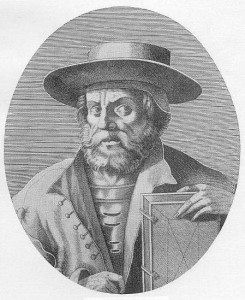Week 1

In 1390, Manuel Chrysoloras (1355-1415) came to Venice on a diplomatic errand as the representative of the Byzantine Emperor in Constantinople. While visiting Venice he met a number of Florentines and one, Giacomo da Scarperia, followed him home to Constantinople to study Greek. Other Florentines heard about Chrysoloras and therefore in 1396, the Florentine Chancellor Coluccio Salutati invited Chrysoloras to come to Florence as a professor of Greek. Chrysoloras would teach the ancient language to whomever might want to attend the classes. This event—a formal program of Europeans studying Greek—is as useful a mark for the beginning of the Renaissance as any. With the arrival of Chrysoloras in Florence, almost a thousand years of Western European ignorance of Greek came to an end. And with this new field of study came new books, new publications, new ideas. The study of Greek sparked new interest in mathematics, astronomy, geography, geometry, optics, and cartography. By the 1420’s Florence found itself the center of an international movement that would create modern Europe.
REQUIRED READING: This week, Chapter IV, "Florence"
Our text for this Fall Quarter is the very fine introduction to the Renaissance by one of our greatest historians, J. R. Plumb. This inexpensive volume will serve us well for all ten weeks of the Fall Quarter. Please read the beautiful obituary that appeared in 2001, when Professor Plumb died, and you will be able to better appreciate his achievements.

J. H. Plumb,
The Italian Renaissance,
Mariner Books; Revised edition (June 19, 2001),
ISBN 0618127380
Amazon: Spanning an age that witnessed great achievements in the arts and sciences, this definitive overview of the Italian Renaissance will both captivate ordinary readers and challenge specialists. Dr. Plumb’s impressive and provocative narrative is accompanied by contributions from leading historians, including Morris Bishop, J. Bronowski, Maria Bellonci, and many more, who have further illuminated the lives of some of the era’s most unforgettable personalities, from Petrarch to Pope Pius II, Michelangelo to Isabella d'Este, Machiavelli to Leonardo. A highly readable and engaging volume, THE ITALIAN RENAISSANCE is a perfect introduction to the movement that shaped the Western world.
RECOMMENDED READING:
J. R. Hale, The Civilization of Europe in the Renaissance. This study of the whole Renaissance period in all of Europe was the final masterpiece of one of the greatest historians of the Early Modern period. John Hale was working on this book when he suffered a debilitating stroke. But his wife, Sheila Hale, and other scholars finished the book for publication and we are all enriched by its availability. It is in print, but you might also look at used copies of the original quality paperback. This book will serve us for the whole year-long course. It is especially useful for Winter and Spring Quarters.

John Hale,
The Civilization of Europe in the Renaissance,
Scribner, Reprint edition (June 1, 1995),
ISBN 0684803526
Ferdinand Schevill, Medieval and Renaissance Florence. The Schevill book that we used in on our class during "The History of Medieval Italy," is still useful for this Renaissance class. But this year you would only want Volume 2 on Renaissance Florence. It is a very detailed historical record of events in Florence during the Fifteenth Century. If you want one book to give you the year by year events and explanations of basic political structures, this is the book you want to own. Copies of both volumes are in our Institute library.
This two-volume history of Florence is the best detailed study of Florence ever written. Schevill wrote a masterpiece of well researched narrative history for Florence in 1936 and then it was republished in a Harper Torchbook paperback in 1961. The Harper Torchbook is still out there in used book stores so we have purchased five for our library. But there are still copies left if you want to own one. It is two volumes with the first volume devoted to our period of Medieval History and the second volume on Renaissance Florence. For the Lombards see Medieval Florence (Volume 1) Chapter Three, "Darkness Over Florence."

Ferdinand Schevill,
Medieval and Renaissance Florence,
Harper Torchbook paperback, 1963, 2 volumes,
ISBN B000PX4SUU